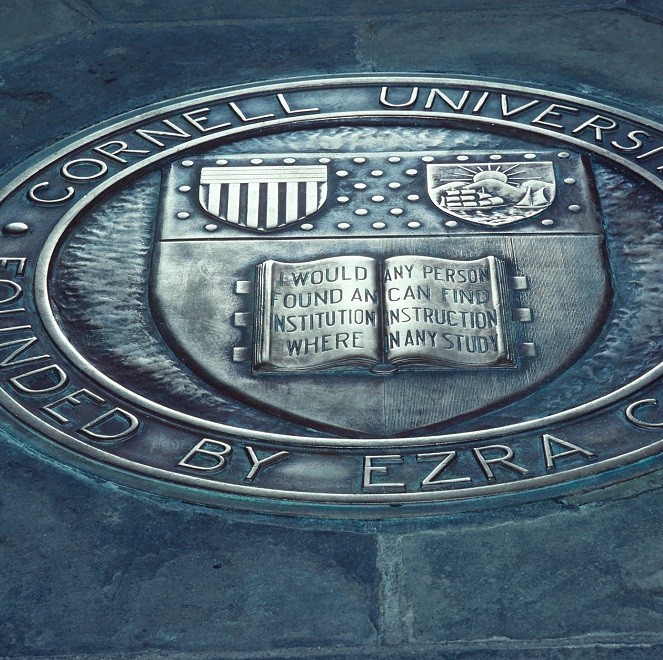News and Events
Full listing
November 1, 2021
Sometimes it’s good to be a little bad.
Cornell researchers found a counterintuitive way of improving 3D-printed metal alloys. By deliberately introducing more defects into the printing process, followed by a post-processing treatment that uses high temperature and high pressure to change the material’s microstructure, they turned the defects into assets, resulting in a stronger, more ductile metal product.
The technique could potentially be applied to any 3D-printed metal alloy and could be particularly effective for manufacturing products for biomedical and aerospace industries.
October 28, 2021
Special honors for two outstanding female scientists: Jie Shan, professor of Applied and Engineering Physics and Physics at Cornell University (USA), and Prineha Narang, assistant professor of Computational Materials Science at Harvard University (USA), will be awarded the Mildred Dresselhaus Prize 2021 within the Mildred Dresselhaus Guest Professorship Program of the Hamburg Centre for Ultrafast Imaging (CUI). The Program includes an extended research stay at the Cluster of Excellence "CUI: Advanced Imaging of Matter" as well as prize money of € 20,000 for the senior prize and €10,000 for the junior prize.
October 8, 2021
Superconductivity remains one of the fastest evolving topics in modern physics. Recent research has shown the promise of interfacial and hybrid superconductors—artificially engineered systems in which superconductivity emerges from interactions between dissimilar materials.
To synthesize, detect, and investigate this emerging class of superconductors, Kyle Shen, physics, is combining molecular beam epitaxy and other advanced materials synthesis technologies with a suite of in situ tools including angle-resolved photoemission spectroscopy and in-vacuum electrical resistivity measurements. Shen is the James A. Weeks Professor of Physical Sciences; director of the Laboratory of Atomic and Solid State Physics and a Stephen H. Weiss Presidential Fellow.
October 4, 2021
Four ECE faculty members have been honored with Excellence in Advising and Teaching Awards by the College of Engineering. The annual awards recognize distinguished teaching and mentoring within the college, as well as leadership in path-breaking science and technical innovation.
September 21, 2021
September 2021: Former KIC postdoc fellow Chenhao Jin has won the 2021 Blavatnik Regional Award for Young Scientists. Jin, now a tenure-track assistant professor at the University of California, Santa Barbara, was nominated by Cornell University for the award in Physical Sciences and Engineering. The Blavatnik Regional awards "honor outstanding postdoctoral scientists from academic research institutions across New York, New Jersey, and Connecticut."
August 16, 2021
Cornell researchers and their collaborators will continue to advance quantum science and technology thanks to $5.4 million in new funding from the U.S. Department of Energy (DOE).
Cornell is leading two of 29 research projects announced July 23 by the DOE’s Office of Science. The funding supports researchers who are developing the next generation of quantum smart devices and computer technology, which are critical tools to solving pressing national challenges, according to U.S Secretary of Energy Jennifer M. Granholm.
July 29, 2021
Electrons in metals try to behave like obedient motorists, but they end up more like bumper cars. They may be reckless drivers, but a new Cornell-led study confirms this chaos has a limit established by the laws of quantum mechanics.
The team’s paper, “Linear-in Temperature Resistivity From an Isotropic Planckian Scattering Rate,” written in collaboration with researchers led by Louis Taillefer from the University of Sherbrooke in Canada, published July 28 in Nature. The paper’s lead author is Gael Grissonnanche, a postdoctoral fellow with the Kavli Institute at Cornell for Nanoscale Science.
July 28, 2021
July 2021: KIC faculty member Brad Ramshaw and KIC postdoc Gaël Grissonnanche have developed a calculation framework to accurately measure the Planckian Limit. '"Before, the 'Planckian limit' was just kind of inferred from data using very simple models. We did a very careful measurement and calculation and showed that it really is obeyed right down to the fine details. And we found that it’s isotropic, so it’s the same for electrons traveling in any direction."' The team's research has been published in Nature.
June 24, 2021
In 2016, physicist J.C. Séamus Davis discovered an elusive state of quantum matter in the cuprates, which are copper oxide materials laced with other atoms. That launched a new sub-field in the study of quantum materials.
But whether this was a unique phenomenon in the cuprates or a universal and important property of nature remained unknown – until now.
Using an improved version of the radically new quantum microscope technology he developed for this purpose, Davis and his team have now found the same exotic state of quantum matter in a widely used and conventional type of material, the transition metal dichalcogenides (TMD).
Their paper, “Discovery of a Cooper-pair Density Wave State in a Transition-metal Dichalcogenide,” published June 25 in Science. Co-authors include Cornell postdoctoral fellows Xiaolong Liu and Yi Xue Chong, and Rahul Sharma, Ph.D. ’20, a postdoc at the University of Maryland.
June 24, 2021
June 2021: A team led by KIC faculty member J.C. Seamus Davis, and which included KIC Fellow Xiaolong Liu, have discovered that Pair Density Wave (PDW) states exist in transition metal dichalcogenides (TMD). The discovery provides a rich platform for discovery of new states of quantum matter and for development of new technologies.

